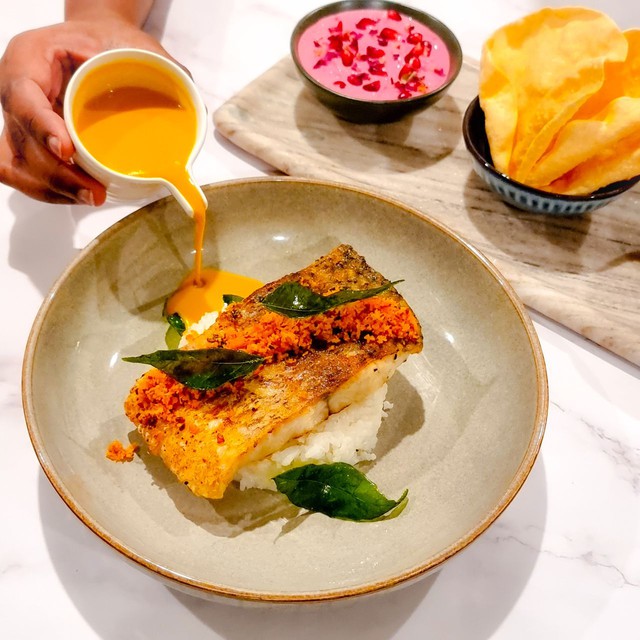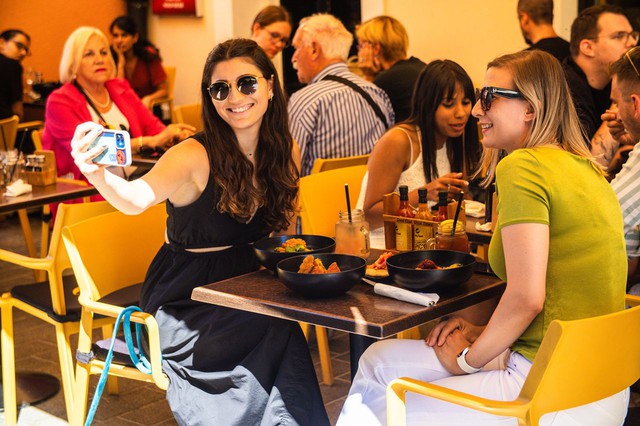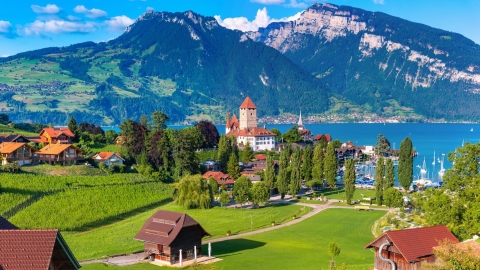"Diners often think that the restaurant will have dishes that are similar to Indian flavors," said Aushi Meewella, the restaurant's co-founder, who grew up in Sri Lanka in London.

A Sri Lankan meal cooked by Chef Dhayanie Williams.
Although Sri Lanka is India's tiny neighbor with a population of just 22 million, its cuisine and culture are quite distinct.
And now, a new generation of Sri Lankan chefs and entrepreneurs around the world are focusing on indigenous cuisines to sustain the country's diverse culinary heritage.
Travel Connection
"For a long time, Sri Lankan cuisine was not popular. But now, more and more Sri Lankans are willing to try our cuisine, open restaurants and spread our cuisine to the world," said Aushi Meewella.

Uppuveli Beach, on the east coast of Sri Lanka. Photo: CNN
Ms. Meewella believes that tourism is the connecting thread that helps tourists know more and more about Sri Lankan cuisine.
Despite a disruption in tourist arrivals due to the Covid-19 pandemic and more recently the worst economic crisis ever, Sri Lankan tourism is now thriving again, attracting 800,000 visitors by 2023 as of the first week of August.
“People come to visit, explore our diverse island and try Sri Lankan food and they rate the food as delicious,” said Ms Meewella.
Chef Dhayanie Williams, a contestant on 'MasterChef Australia 2019', said the growth of social media over the past decade and shows like Masterchef have helped professional chefs and many families promote Sri Lankan cuisine around the world.
“We have seen many people cooking authentic Sri Lankan food on these shows. The live shows will encourage people to try Sri Lankan food at the restaurant,” says Chef Dhayanie Williams.
Diverse influences

Diners sample food at Curry Bowl in Zagreb, Croatia. Photo: CNN
Today, there are more and more Sri Lankan chefs around the world advocating the national cuisine.
“This move has helped change the global perception that Sri Lankan cuisine is different from Indian food and is not simply curry with rice,” said Mr Williams.
Despite the same name, Sri Lankan rotis are smaller, thicker "disks" made from freshly grated coconut and rice flour, unlike India's large rotis made from wheat.
Rice, coconut milk, native fruits, vegetables and seafood form the basis of Sri Lankan cuisine.
Meanwhile, Ms Meewella explained that this was inspired by the diverse ethnic cultures and Dutch and Portuguese influences. At Kolamba restaurant, the main course includes lamb poriyal, a popular dish in Sri Lanka's Tamil-populated northern region, in which the meat is fried with onions, green chilies and lemon.
A popular dessert is watalappam, a palm and coconut jaggery custard prepared by Muslims to celebrate Eid.
Ms Meewella points out that Sri Lankan cuisine is also heavily plant-based with many vegan options, which helps it stand out and resonate with diners globally.
This eating habit is not a passing trend. For centuries, Sri Lankans have used wild and organic ingredients such as jackfruit, spinach and yam, mixed with spices and herbs, fried and cooked in curries to create dishes with unique flavors.
The menu at Kolamba restaurant follows these plant-based recipes with dishes like bread curry cooked in coconut milk and green banana fried with grated coconut.
In Sri Lankan cooking, white coconut flesh is grated and pressed to create rich coconut milk, which thickens various vegetable and meat curries.
Fresh coconut milk is also added to drinks made with herbs and rice – such as the morning smoothie called kola kenda. During celebratory events such as New Year or the first day of work, Sri Lankans also cook coconut milk with rice to prepare a creamy breakfast called kiribath.
Spicy, sour, sweet
Although many people perceive Sri Lankan food as spicy, it is made up of many other spices and herbs besides chilies. Coriander seeds, black pepper, mustard seeds, nutmeg, cinnamon, cardamom, curry leaves, pandan leaves and lemongrass are all used to add flavor and aroma to dishes.
Spices are also roasted and ground together to form different curry powders, an essential flavoring agent.
Sri Lankan-American chef Sam Fore says Sri Lankan ingredients are often incorporated into standard dishes to add flavor. For example, she prepares fried chicken, a familiar American dish, but mixes it with Sri Lankan chicken curry spices, grinds them and combines them with buttermilk to add flavor.
As chefs and entrepreneurs around the world take an interest in unique flavors of local dishes, Sam Fore believes interest in Sri Lankan cuisine will continue to grow.
“As cuisine evolves, it will take some creative application of flavors like chili, lime, and tamarind to fully integrate into international palates. We, as chefs, have a responsibility to honor our roots while also innovating for the future. I can’t wait to see Sri Lankan comfort food become a national food craving,” Fore suggests./.


































